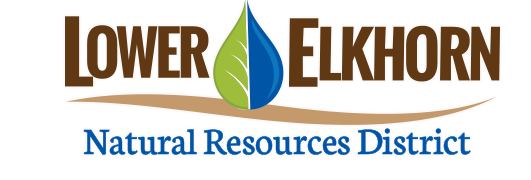Plans in motion to protect West Point and Battle Creek from flooding
/As the area continues to recover from the March flood events, the Lower Elkhorn Natural Resources District (LENRD) Board of Directors is looking into possible solutions for communities for the future. One of the LENRD’s 12 responsibilities includes flood prevention and control as well as prevention of damages from flood water and sediment.
The City of West Point has an interlocal agreement with the LENRD to move forward with a preliminary study and design of a flood control levee.
LENRD Projects Manager, Curt Becker, said, “We’ve been working with the City of West Point in the development of this flood-control project for the last few years. We are to the next step. The levee will allow for optimal flood reduction in times of torrential rainfall.”
The LENRD Board voted to approve 50% of the costs of the West Point Levee Improvement Project design and permitting up to $494,760.00. The district’s share would be $247,380.00. This is part of the $1.7 million project that was approved by the LENRD in July of 2017.
The City of Battle Creek approached the LENRD board this spring, asking if the potential flood-control projects that were deemed feasible in 2014 could be revisited. The 2 reservoirs that have been proposed for the area, south of Battle Creek, are a 160-acre pool for approximately $17 million and a 1,200-acre pool for $36 million. Battle Creek’s City Council met on May 13th and voted to explore options for a 1,200-acre flood-control reservoir on the south side of Battle Creek.
The LENRD Board voted to move ahead with the process of securing funding for a flood-control project at their May meeting, and to file a letter of intent with FEMA/NEMA for flood protection for Battle Creek. The board also voted to direct staff to contract with consulting firms to prepare all the necessary documentation and complete a grant application to the USDA Watershed and Flood Prevention Operations program.
LENRD General Manager, Mike Sousek, said, “There are multiple benefits to think about when considering a project of this size. First and foremost is flood reduction. Along with that comes the benefits of recharge and retiming as well as recreation.” Sousek continued, “This is just the first of many steps in this process.”
The Village of Snyder is seeking a location for a new Public Water Supply Well. The LENRD has a program that provides $5,000 in financial assistance for the construction and development of a test-well that is used to determine the pumping capacity of a proposed well, along with an evaluation of water quality. The information from the test well is then utilized in the design and location of the production well. As a condition of granting the financial assistance, the Village of Snyder will grant the LENRD access to the test-well for future groundwater monitoring purposes. The board voted to direct staff to make payment to the Village of Snyder upon receipt of the documentation of the completion of the test-well.
In other action, the board directed staff to send non-compliance notification letters containing a July 22, 2019 deadline, to farm operators in the Phase 2 and Phase 3 Management Areas who have not submitted annual reports the district. Notices to irrigators who have not submitted end-of-season flow meter readings from the 2018 pumping season for active irrigation wells will also be sent.
The board also held a Public Hearing to receive testimony on proposed changes to the LENRD’s Groundwater Management Area Rules and Regulations.
LENRD Assistant General Manager, Brian Bruckner, said, “The proposed changes include amendments to Rule 1, which would add language outlining additional penalties when enforcing the plan’s rules and regulations, inclusion of some definitions for terms that relate to current groundwater management strategies, and other changes to integrate management components that are included in the recently adopted Integrated Management Plan.”
A complete summary of the proposed changes is available at the LENRD office in Norfolk and on the district’s website. The board will review the testimony and approve the changes at their July meeting.
The next LENRD board meeting will be Thursday, July 25th at 7:30 p.m. at the LENRD office at 1508 Square Turn Boulevard in Norfolk. Stay connected with the LENRD by subscribing to their monthly emails. Like us on Facebook and follow us on Twitter.


